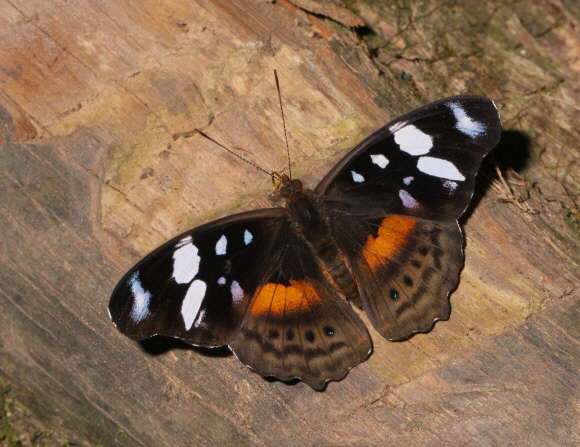 Myscelia capenas, Satipo, Peru – Adrian Hoskins
Myscelia capenas, Satipo, Peru – Adrian Hoskins
Introduction
The genus Myscelia is closely allied to Eunica and Catonephele, and like them is restricted to the neotropical region. Myscelia contains 9 species. Males of most species have metallic blue and white bars or patches on the uppersides. Females lack the blue scales, but have more extensive white markings. The underside hindwings of most species have a dark brown bark-like appearance.
The shape of the wings varies according to species – in some such as orsis and aracynthia the outer margin of the forewing is deeply scalloped, while in others such as cyanthe and ethusa the shape is similar to that of capenas.
Myscelia capenas is the commonest, an unfortunately the least beautiful member of the genus, as the blue scaling is barely detectable in most specimens. It is the only species which has an orange bar across the hindwings.
The butterfly occurs from Colombia to Bolivia.
Habitats
This is a lowland rainforest species found at altitudes between about 200-900m. It is reputed to be uncommon, but I have found them easily at many localities in the foothills of the Andes, and in the upper Amazon basin regions of Ecuador, Brazil and Peru.
Lifecycle
To be completed.
Adult behaviour
Females are rarely seen, and probably spend most of their lives in the canopy.
Males tend to be seen mainly in the afternoons, in light gaps and small glades in the forest. They often settle to imbibe moisture from the ground on narrow trails, and nearly always keep their wings outspread while feeding. They also commonly bask on logs.
